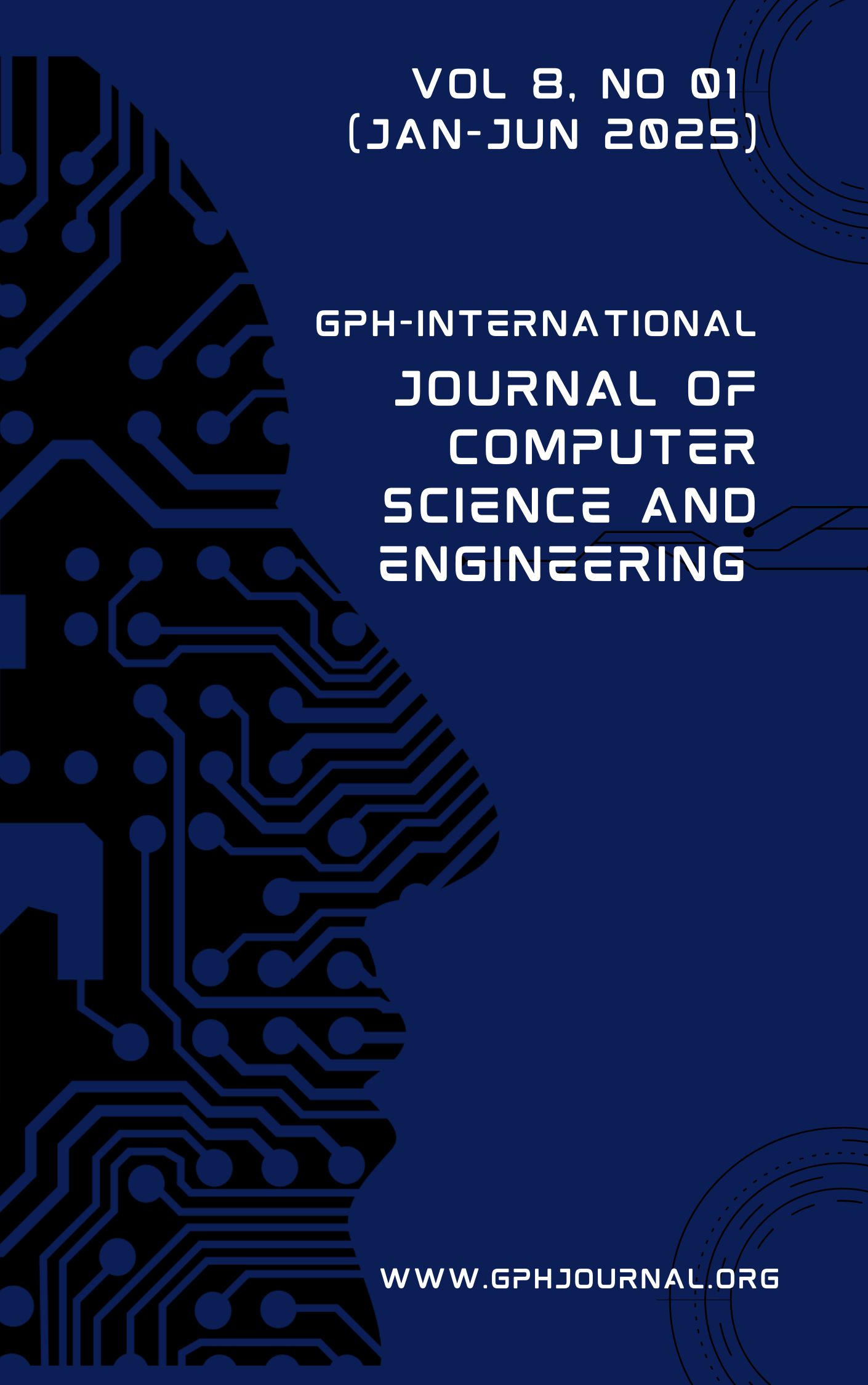An Improved Model for the Evaluation of Search Engine Result Pages Using Hybridized Evaluation Techniques
Abstract
In this paper, the hybridised ranking system was developed by utilising WPR to evaluate the structural importance of web pages by assigning values to both the incoming and outgoing links and also other web pages it is connected to while incorporating CTR metrics to account for user activities and TF-IDF to reduce the weight of commonly used words by assigning lower values to words that appear in many documents hence combining both to measure content relevance. The hybridised approach is compared with the standard PageRank (PR) using the sum of WPR, CTR and TF-IDF metrics for position ranking with 50 randomly selected query datasets which were ranked into less relevant (LR) and most relevant (MR) positions. The hybridised approach reduced irrelevant pages by reshuffling the less relevant pages to the bottom of the list of web pages found while moving the more relevant pages to the top for the given queries, thereby improving the ranking efficiency of the search engine result pages. In Table 4.1, the process of ranking the 1st, 2nd,7th and 8th document for the PageRank is moved to the 23rd 24th 25th and 26th position based on their relevance to the queried data while the 3rd, 4th,5th and 6th document maintained a high position based on their relevance. In Table 4.2, the 1st 2nd 3rd and 4th documents were reshuffled to the 7th 8th 9th and 10th positions while the 6th 7th and 8th documentsmaintained a high-ranked position due to their relevance.This study has provided a scalable framework that enhances user experience by minimising irrelevant search results and prioritising pages of higher relevance.
Downloads
References
Rani, R., & Jain, V. (2013). Weighted PageRank using the Rank Improvement. International Journal of Scientific and Research Publications, ISSN: 2250-3153, 3(7), 3–7.
Ullah, A., Nawi, N. M., Sutoyo, E., Shazad, A., & Naqeeb, S. (2018). Search Engine Optimization Algorithms for Page Ranking : Comparative Study. International Journal of Integrated Engineering, 10 No. 6(December), 19–25. https://doi.org/10.30880/ijie.2018.10.06.003.
Xing, W.& Ghorbani, A. (2004). Weighted PageRank Algorithm.
Tyagi, N. & Sharma, S. (2012). Weighted Page Rank Algorithm Based on Number of Visits of Links of Web Page. 3, 441–446.
Borodin, A., Roberts, G. O. & Rosenthal, J. S. (2005). Link Analysis Ranking: Algorithms, Theory, and Experiments. 5(1), 231–297
Joshi, S. & Goel, S. (2021). Comparative Study of Page Rank and Weighted Page Rank Algorithm. SSRN Electronic Journal, 2929–2937. https://doi.org/10.2139/ssrn.3919359
Shaffi, S. S. &Muthulakshmi, I. (2023). Weighted PageRank Algorithm Search Engine Ranking Model for Web Pages. Intelligent Automation and Soft Computing, 36(1), 183–192. https://doi.org/10.32604/iasc.2023.031494.
Rekha, J. & Purohit, G. N. (2010). Page Ranking Algorithms for Web Mining Page Ranking Algorithms for Web Mining. January. https://doi.org/10.5120/1775-2448.
Mukhopadhyay, D., Biswas, P. & Kim, Y. (2006). A Syntactic Classification based Web Page Ranking Algorithm. 83–92.
Byron, E., Ravi, S., Gibson, D. & Kleinberg, J. (2015). Mining the Web’ s Link Structure. March. https://doi.org/10.1109/2.781636.
Amjad, T., Daud, A. &Aljohani, N. R. (2018). Ranking Authors in Academic Social Networks: ASurvey. Library Hi Tech, 36(1), 97–128. https://doi.org/10.1108/LHT-05-2017-0090
Kim, B., Kang, S.& Lee, S. (2019). A Weighted PageRank-Based Bug Report Summarization Method Using Bug Report Relationships. Applied Sciences. 9. 5427. 10.3390/app9245427.
Haoran D. and Xiao L. (2022). AGRank: Augmented Graph-based Unsupervised Keyphrase Extraction. In Proceedings of the 2nd Conference of the Asia-Pacific Chapter of the Association for Computational Linguistics and the 12th International Joint Conference on Natural Language Processing (Volume 1: Long Papers), pages 230–239, Online only. Association for Computational Linguistics.
Neelam, T.and Sharma, S. (2012). Comparative Study of Various Page RankingAlgorithms in Web Structure Mining (WSM)International Journal of Innovative Technology and Exploring Engineering (IJITEE) ISSN: 2278-3075, Volume-1, Issue-1, June 2012.
Jaganathan, B. &Desikan, K. (2015). Weighted Page Rank Algorithm Based on in-out Weight of Webpages. Indian Journal of Science and Technology. 8. 10.17485/ijst/2015/v8i34/86120.
Rashmi. R. & Vinod, J. (2018).Weighted PageRank using the Rank Improvement; Int J Sci Res Publ 3(7) (ISSN: 2250-3153). http://www.ijsrp.org/research-paper-0713.php?rp=P191481.
Kumar, G.&Duhan, N. Sharma, A. (2011). Page Ranking Based on Number of Visits of Links of Web page. 11-14. 10.1109/ICCCT.2011.6075206.
Xing, W. &Ghorbani, A.A. (2004). Weighted PageRank Algorithm. Proceedings. Second Annual Conference on Communication Networks and Services Research, 2004., 305-314.
The authors and co-authors warrant that the article is their original work, does not infringe any copyright, and has not been published elsewhere. By submitting the article to GPH-International Journal of Computer Science and Engineering (GPH-IJCSE), the authors agree that the journal has the right to retract or remove the article in case of proven ethical misconduct.




